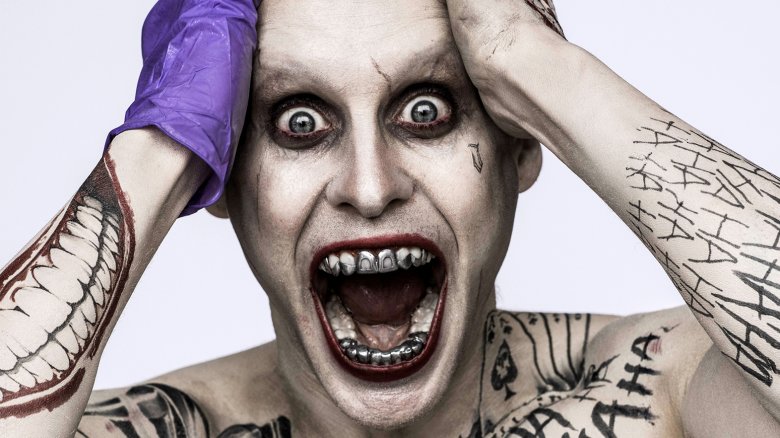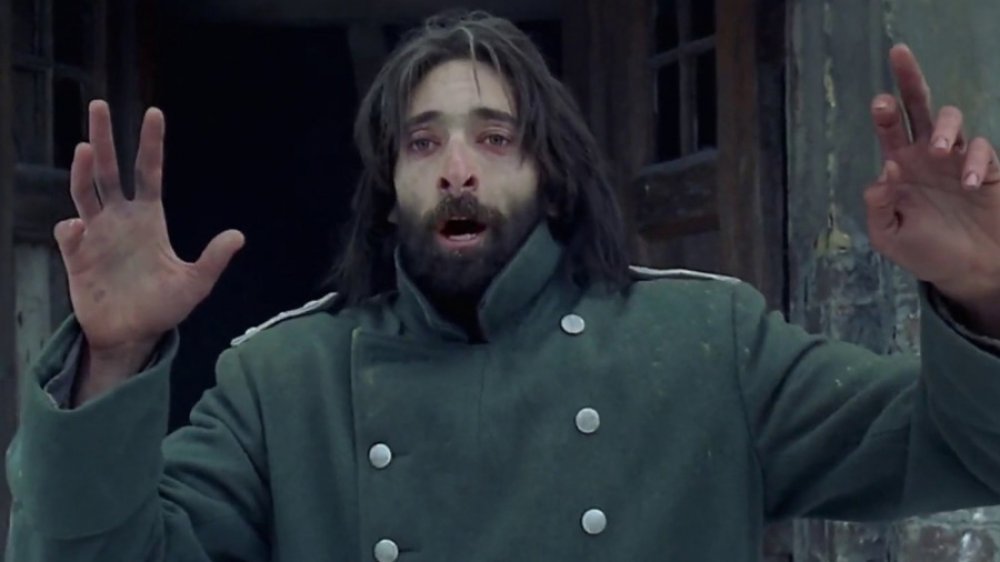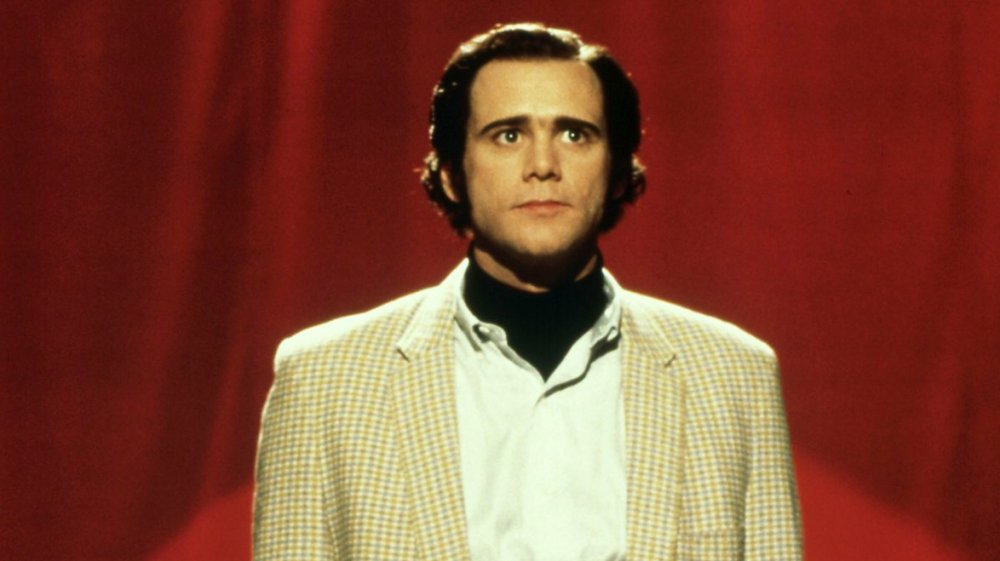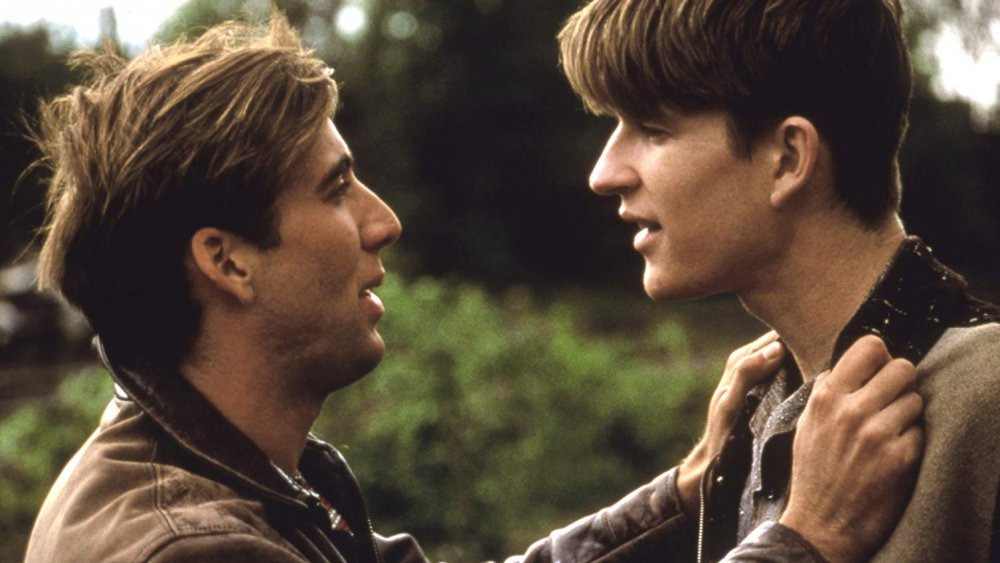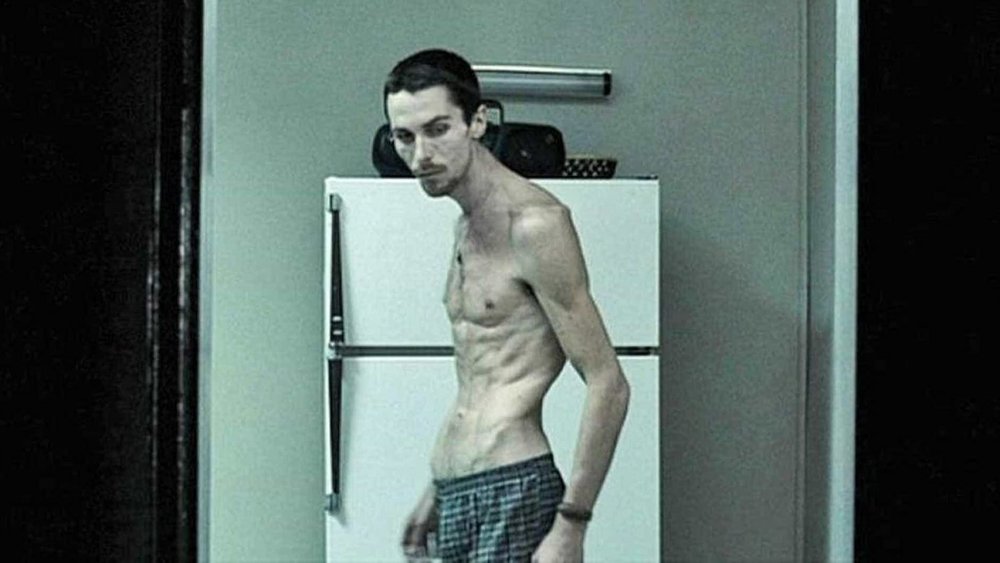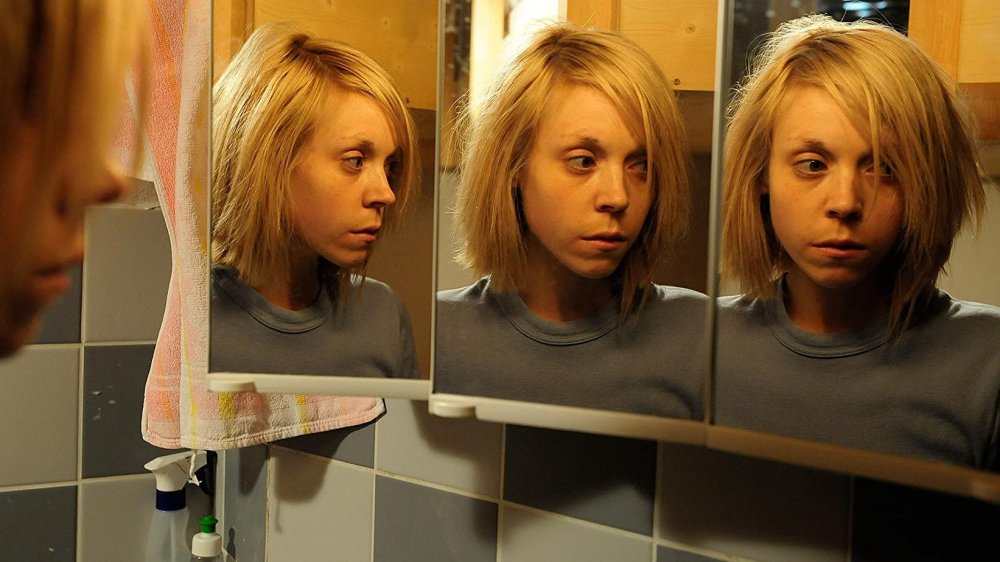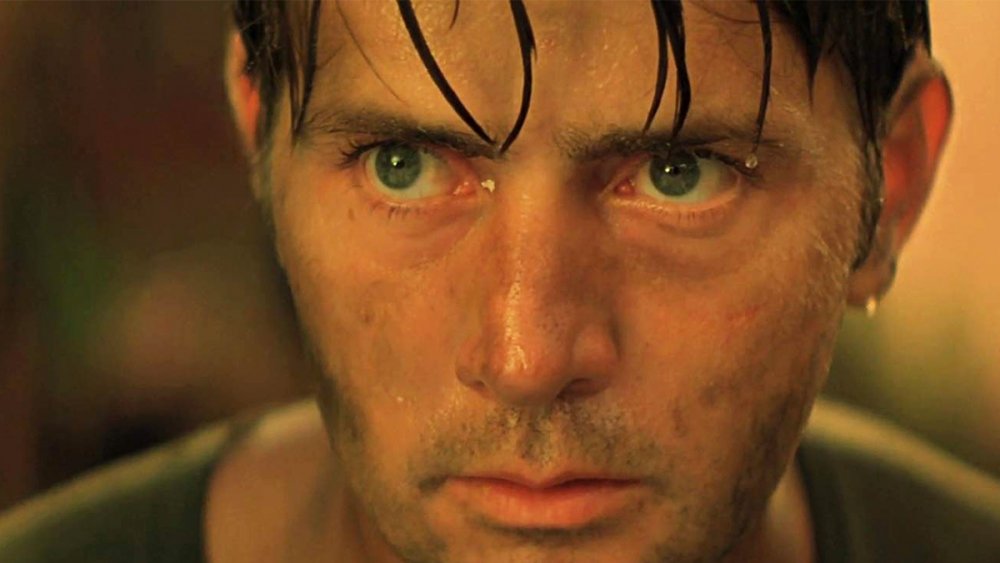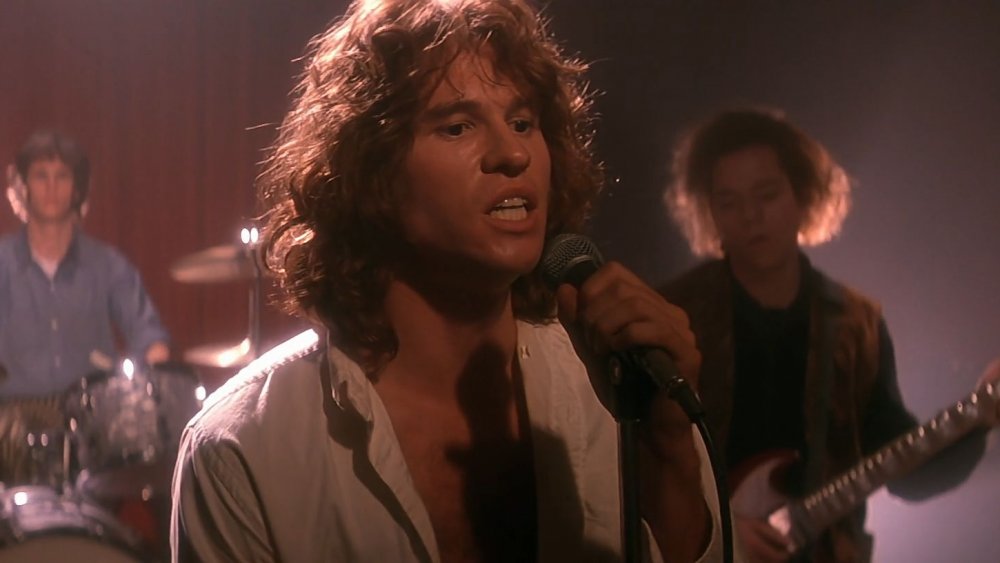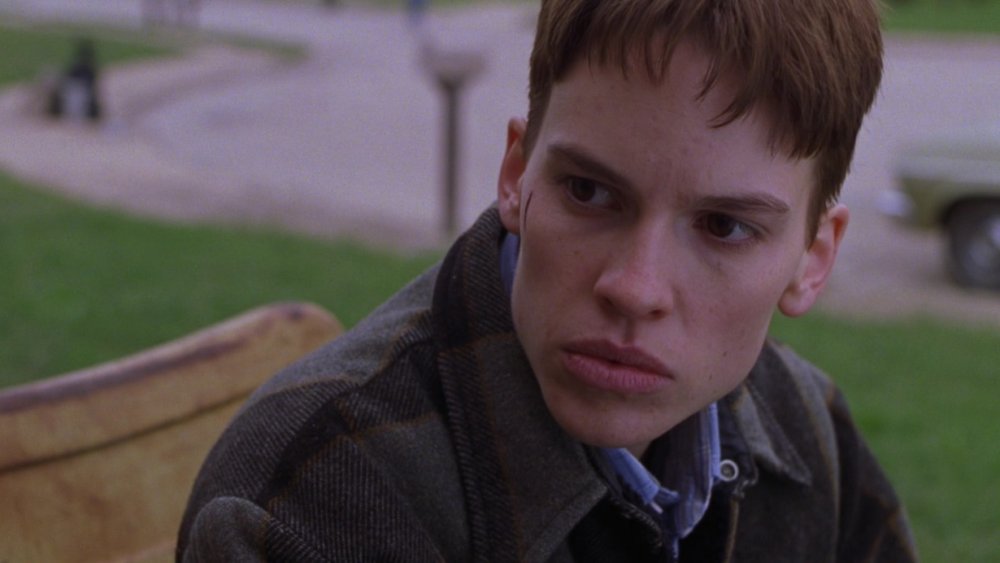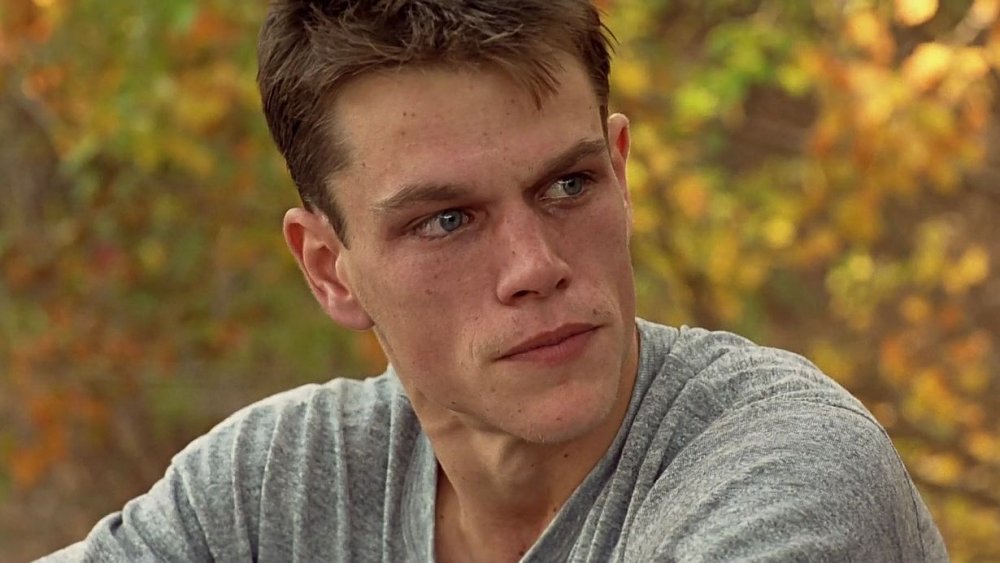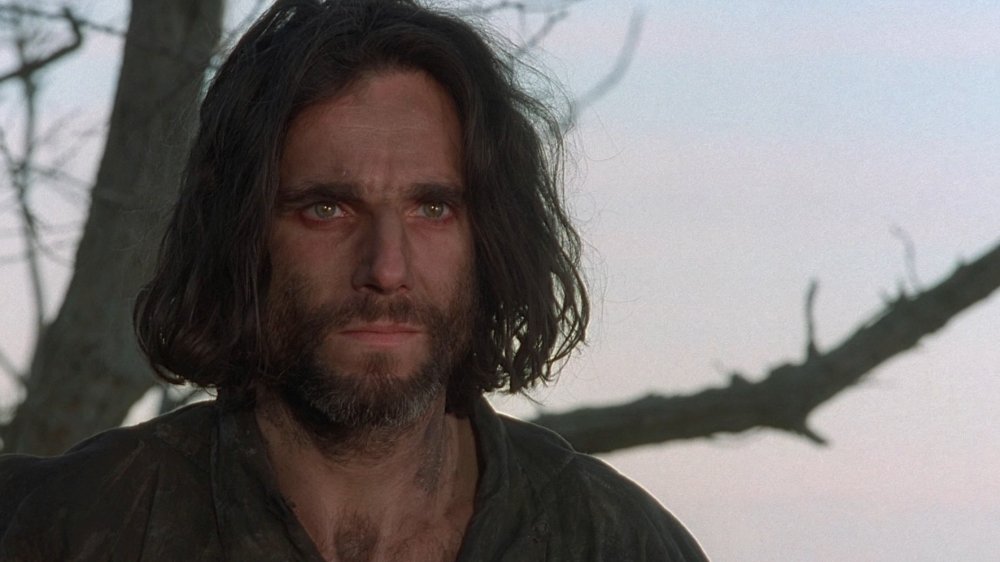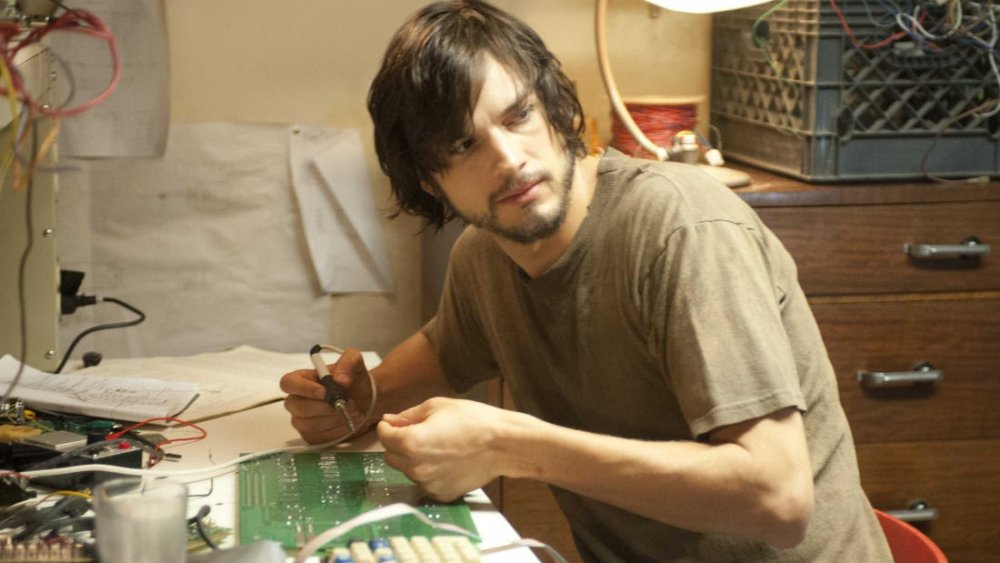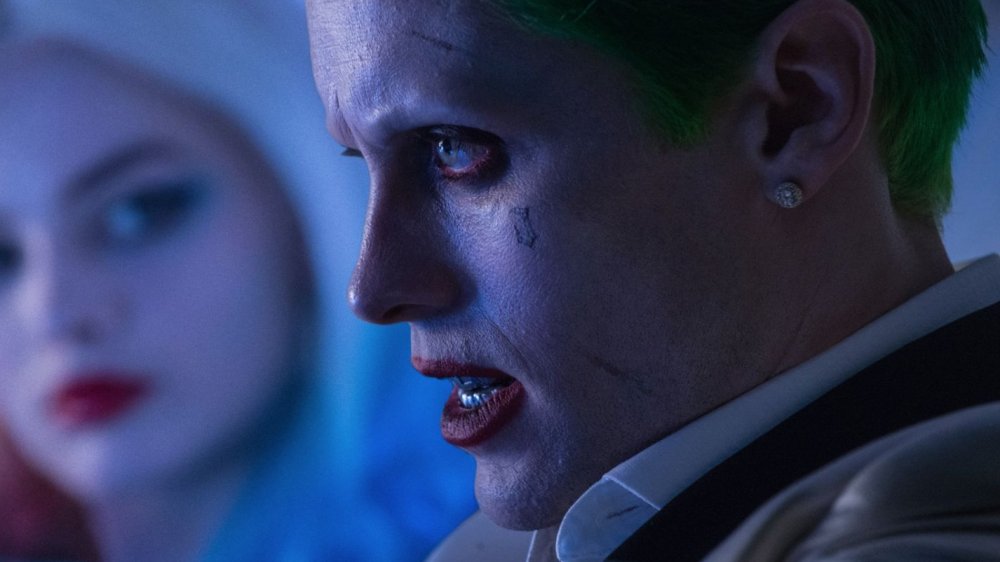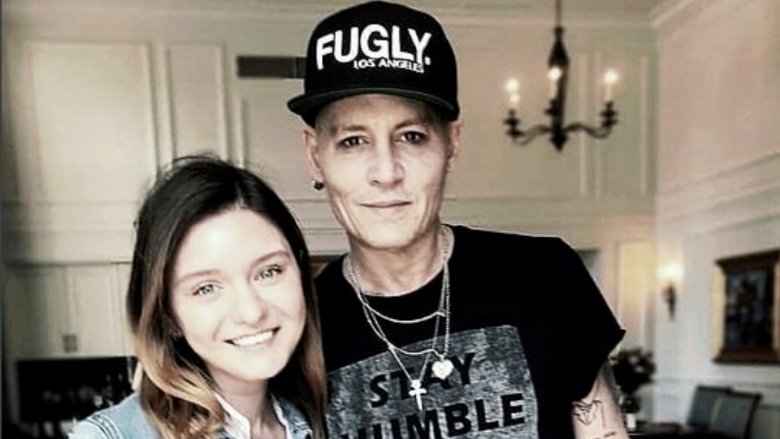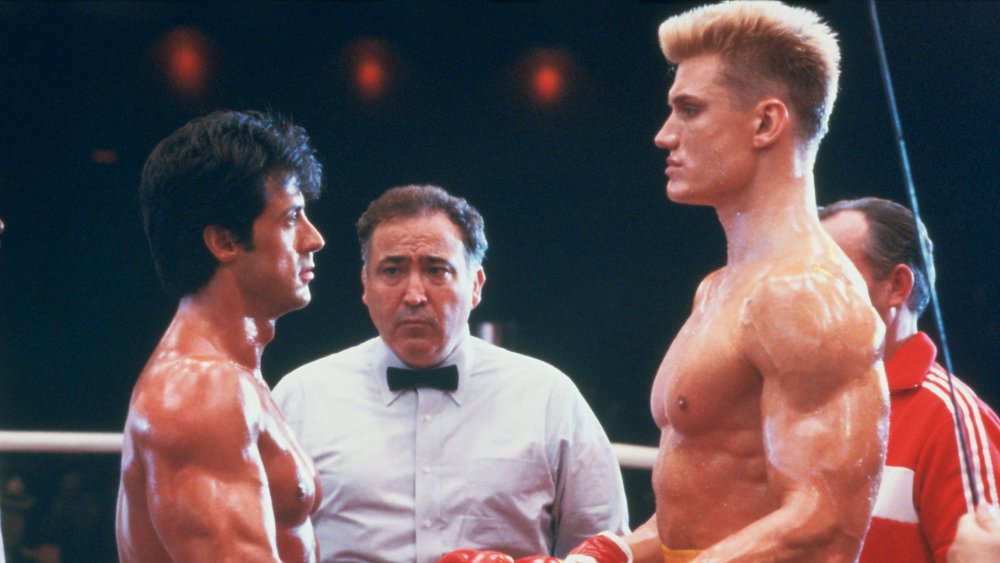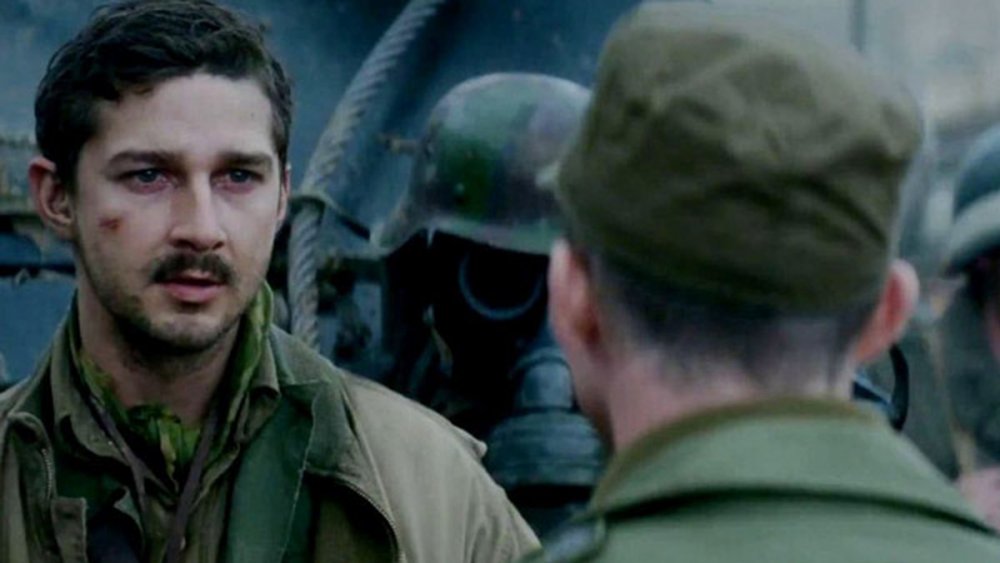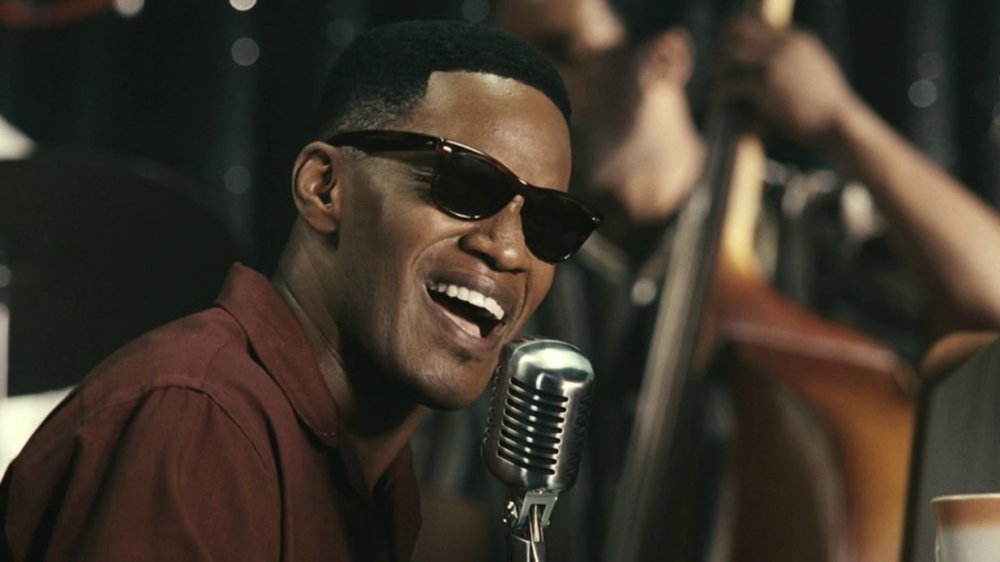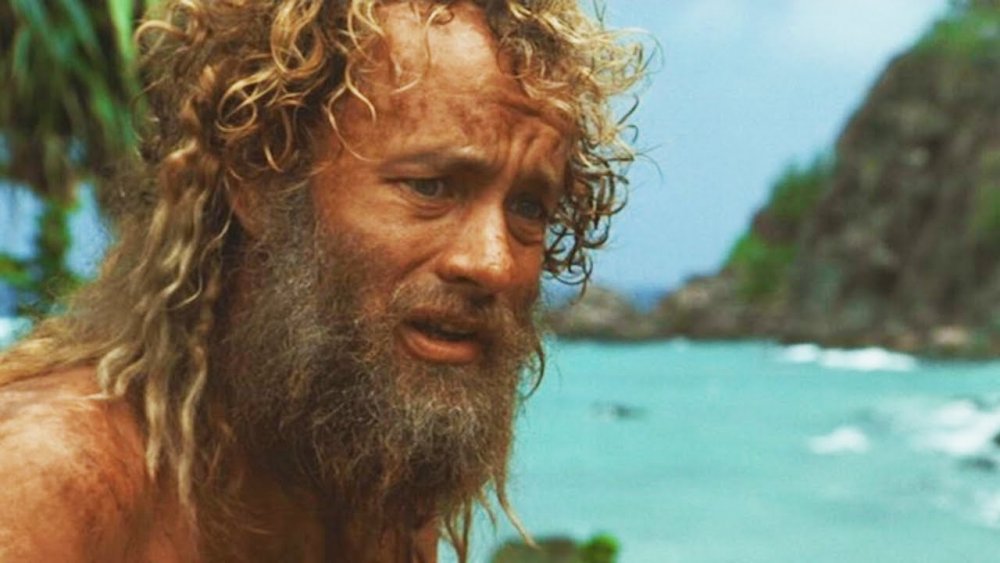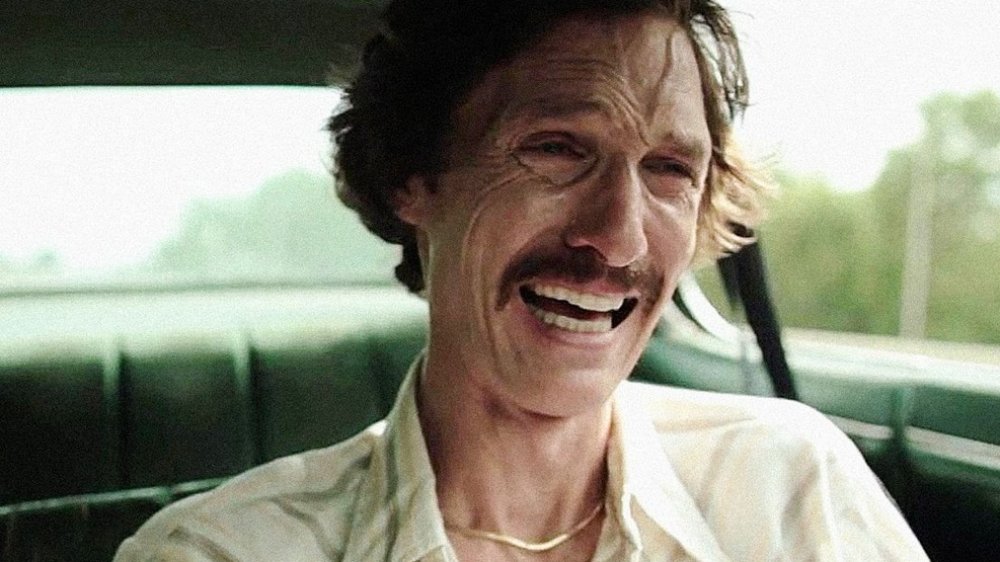Times Method Actors Took Things Way Too Far
Whenever an actor decides to use "the method" to approach a role, it usually ends up making headlines. From Constantin Stanislavski's original holistic acting "system" to Lee Strasberg's adapted technique, to the more modern American school of method acting, the process of really getting your head inside a character has made for some jaw-dropping performances—and some shocking behind-the-scenes tales.
Unsurprisingly, for some actors, staying in character even after the director yells "cut" can have some...interesting real-world consequences, especially if the person they're playing has a tendency to be less than kind to others. With millions of dollars at stake, and in the midst of an industry where almost anything is fair game in pursuit of art, many professionals chalk it up to the price of doing business, but there have been some very notable exceptions. Here are just a few of the times method actors have taken things too far for a part.
Adrien Brody - The Pianist
In 2002, Adrien Brody scored the role of a lifetime when director Roman Polanski picked him to star as Polish-Jewish musician and composer Władysław Szpilman in The Pianist. The actor immediately buried himself in Szpilman's World War II memoirs in order to understand the role better. After being forced into the Warsaw Ghetto and separated from his family, Szpilman eluded Nazi forces and survived the Holocaust by hiding in the ruins of Warsaw. To prepare for the part, the 6'1" Brody spent six weeks on an intense diet to get down to a mere 130 pounds before filming began. He also spent four hours a day practicing piano—which allowed him to actually play certain Chopin pieces onscreen. For the better part of a year, Brody essentially "dropped out" of modern society. He moved to Europe, sold his car, and disconnected his cellphone.
After filming wrapped, it took over half a year for Brody to recover. "There were times when I was concerned that I might not be able to get out of it sane, because I didn't realize how far it had taken me," he later admitted. In the end, his dedication to the role paid off in a big way—not only did The Pianist earn widespread acclaim and accolades, but Brody won the Academy Award for Best Actor—making him the youngest winner (at 29 years old) ever in that category.
Jim Carrey - Man on the Moon
In 1999, Jim Carrey took a deep dive into method acting when he played comedian Andy Kaufman in Man on the Moon. While a handful of stories from the set made it into the news over the years, a 2017 Netflix documentary revealed many more jaw-dropping moments from the film's production. In Jim & Andy: The Great Beyond, behind-the-scenes footage is paired with a contemporary interview with Carrey. It soon becomes clear that Carrey's dedication to the role went way beyond spitting in the face of professional wrestler Jerry Lawler.
During the shoot, Carrey didn't just play Kaufman—he channeled him. "Andy felt it was necessary to stay in character at all times," Carrey explained, suggesting he followed the deceased comedian's "advice," much to the consternation of director Milos Forman. As Andy, Carrey had emotional reunions with members of Kaufman's family, including an hourlong conversation with his daughter—who never got a chance to meet her father before he died from lung cancer in 1984. As Kaufman's vulgar and alcoholic alter ego Tony Clifton, Carrey went on drunken tirades, crashed a convertible, and stormed into Steven Spielberg's office to chat with him about Jaws. Even though Carrey won praise (and a Golden Globe) for his performance, the role clearly took a toll on his psyche. "When the movie was over, I couldn't remember who I was anymore," Carrey claimed. "...I wonder what would happen if I decided to just be Jesus."
Nicolas Cage - Birdy
He might be better known today for his eccentric spending habits, mediocre action movies, or status as an internet meme, but Nicolas Cage is also a dedicated adherent to "the method." His approach to acting has yielded mixed results over the years; he earned acclaim for films like Adaptation (2003) and Leaving Las Vegas (1995), and derision for movies like The Wicker Man (2006). One of his best method roles dates back to the early days of his acting career, when he was cast in the 1984 war drama Birdy. In the film, Cage plays a disfigured Vietnam veteran who visits a friend from the war (Matthew Modine) in a psychiatric hospital, and does his best to bring him out of a delusional and near-catatonic state.
To prepare for the part, the then 19-year-old Cage had his wisdom teeth extracted without anesthesia. He also spent weeks with his face bandaged day and night, so he could experience the physical pain and discomfort his character was going through. His impressive dedication to the part shows, and Cage's work in Birdy remains one of his best early performances.
Christian Bale - The Machinist
While method acting began as a way to harness personal experiences and emotions as a way to play a part more convincingly, in recent years it's become almost synonymous with drastic physical transformations. In one prominent example, Christian Bale made headlines and jeopardized his health when he lost a jaw-dropping 63 pounds to play the insomnia-plagued Trevor Reznik in 2004's The Machinist. For weeks before filming began, Bale survived on just an apple and a can of tuna fish a day. He used a photo of an emaciated Hank Williams—taken three months before the musician's death—as his inspiration.
According to his Machinist costar Michael Ironside, the drastic diet wasn't even necessary. The screenwriter for the movie had put some example weights into the script based on his own height. When the much-taller Bale saw the figures, he decided to go for those weights instead of something more realistic for his bigger frame. "Those weights he writes on the bathroom wall [in The Machinist] are his actual weights in the film," Ironside explained. After filming wrapped, Bale bulked up again—gaining 109 pounds in just six months for his next role in Batman Begins. He's gone on to use drastic weight changes in preparation for other parts, too; more recently, Bale shaved his head and packed on the pounds to play former U.S. vice president Dick Cheney in the 2018 biopic Backseat.
Antonia Campbell-Hughes - 3096 Tage
For her role in the German drama 3096 Tage, Antonia Campbell-Hughes truly embodied the maxim that "art is pain." The movie is based on the harrowing true story of Natascha Kampusch, an Austrian girl who was abducted at age 10 and subsequently spent more than eight years—3096 days, to be exact—in captivity. She shaved her head and went on an extreme diet to accurately portray Kampusch, who weighed less than 100 pounds when she escaped her captor. The dungeon that Kampusch was kept in measured less than 54 square feet.
The soundproofed cell was recreated to scale for the filming of 3096 Tage, "to keep the sense of claustrophobia." Campbell-Hughes couldn't even stand up in the room, and suffered multiple injuries on the set as a result—including a broken rib, broken toe, a torn Achilles tendon, and numerous other cuts and bruises. Beyond the physical pain, Campbell-Hughes also had to open herself to the psychological trauma Kampusch went through after being abused for years. Even after filming had wrapped, the suffering wasn't over: when the still shockingly thin actress made a red carpet appearance in 2012, tabloids speculated wildly about her having an eating disorder. In spite of it all, Campbell-Hughes is satisfied with the end result. "I worked very hard on that film," she later told the Belfast Telegraph. "I learned from it. I wouldn't do anything differently."
Martin Sheen - Apocalypse Now
After director Francis Ford Coppola fired Harvey Keitel from 1979's Apocalypse Now two weeks into production, he picked Martin Sheen to take Keitel's place as Captain Benjamin L. Willard. The production of Apocalypse Now was notoriously troubled; it took 13 months just to finish filming the war drama.
While many today think of "method acting" as undergoing drastic transformations or traumas to better understand a character, Sheen's approach more closely resembles Lee Strasberg's method —where an actor uses experiences from their own lives to bring them closer to their character. Sheen certainly brought his own demons with him to the set; his personal struggle with alcoholism played a key role in the film's famous opening scene. The actor was completely drunk that day, and Coppola captured the unscripted mirror-smashing, weeping, and blood-smearing that followed.
From the tropical diseases that ravaged the crew to actual cadavers showing up on the set, the shoot was essentially uncontrolled chaos. "My film is not about Vietnam, it is Vietnam," Coppola famously declared. Sheen agreed—when production moved to the jungle, he told friends, "I don't know if I'm going to live through this." Later in the shoot, Sheen actually suffered a heart attack. He crawled for a quarter mile to a road, where he was found and airlifted to a hospital. He was back on the set just six weeks later.
Val Kilmer - The Doors
In the 1980s, Val Kilmer had made something of a name for himself with his roles in Top Gun and Willow, but he hadn't really had a chance yet to show off his Juilliard training with a weightier role. That all changed when Kilmer was cast to play singer Jim Morrison in the 1991 biopic The Doors. Before he even got the role, Kilmer spent thousands of dollars to produce a music video of himself as Morrison in a bid to impress director Oliver Stone.
After landing the part, Kilmer immersed himself in the role by reading Morrison's writings, interrogating the Doors' longtime producer Paul Rothchild for hours, and spending time in Morrison's old haunts around southern California. His dedication to the part was so complete that it even led to some spooky moments in the studio with Rothchild. Kilmer learned to perform 50 songs so well that even Morrison's bandmates were unable to tell who was singing when they heard the recordings. Except for a handful of lines and one of Morrison's unearthly screams, Kilmer sang every song in the film live. He earned widespread praise for the role, but the actor claimed there was nothing supernatural about his uncanny performance. "It's just the blessing of acting. It's not possession, it's just a reminder of what we all can do with our minds, if we are open, and willing," Kilmer explained. "We can do anything."
Hilary Swank - Boys Don't Cry
By the time director Kimberly Peirce secured the funding to make Boys Don't Cry, she had already spent three years desperately searching for the perfect person to play trans man Brandon Teena, who was raped and murdered in 1993. After showing up to an audition in her husband's clothes and convincing a security guard she was male, the relatively unknown Hilary Swank was cast as Brandon, beating out more than 100 others. After landing the part, Swank had to undergo a physical and psychological transformation. For weeks, she lived as a trans man both on and off the set: she lost weight to bring out the angle of her jaw and cheekbones, cut her hair short, bound her breasts, and packed her pants with a rolled-up sock. She practiced the lower register of her voice, and immersed herself in Teena's life by reading court transcripts about Brandon and books about being transgendered.
Swank was frequently able to pass as male during this period, even fooling her neighbors. At other times, some of the people she met seemed "threatened" by her androgynous and non-typical appearance. "I didn't realize what it was like to be out in the world as someone that people can't define," she explained. "That's a really lonely place." For Swank, playing Brandon in Boys Don't Cry was a personally transformative experience. "I was afforded this amazing opportunity to stretch myself as an artist, and it just happened to stretch me as a human being," she concluded. The film certainly transformed Swank's budding career—she went on to win an Oscar and numerous other accolades for her impressive performance.
Matt Damon - Courage Under Fire
He may be famous today for movies like Good Will Hunting and the Jason Bourne franchise, but in the early 1990s, Matt Damon was just another young and relatively unknown actor. All that changed when he was cast in the 1996 war drama Courage Under Fire. In the film, Damon plays Specialist Andrew Ilario, an ex-medic who has buried himself in his heroin addiction to deal with the psychological trauma of his war experiences.
To prepare for the role, Damon dropped down to a mere 139 pounds by running 13 miles a day and subsisting on a meager diet made almost entirely of chicken breast. The drastic weight loss took an enormous toll on his body—after filming wrapped, he had to take special medication for a year and a half just to repair the damage done to his adrenal gland. In the end, all of his hard work paid off—he was praised for his "impressive" performance, which led to director Francis Ford Coppola giving him his breakout role in 1997's The Rainmaker.
Daniel Day-Lewis - The Crucible
For much of his career, three-time Oscar winner Daniel Day-Lewis has been notorious for his intense approach to method acting. From training as a butcher and catching pneumonia (because he wouldn't wear a warm coat) during 2002's Gangs of New York, to signing his text messages as "Abe" while filming 2012's Lincoln, the actor's behavior on and off the set is the stuff of legend.
In preparation for his role as John Proctor in The Crucible (1996), Day-Lewis went back to basics—literally. He lived for months on the set of the 17th-century village with no electricity or running water, built his character's home by hand with only tools from that era, and even gave up his beloved motorcycle in favor of a horse.
Ashton Kutcher - Jobs
After Apple CEO Steve Jobs died in 2011, the race was on in Hollywood to develop a feature film based on the mogul's remarkable life. For the 2013 independent film Jobs, director Joshua Michael Stern picked Ashton Kutcher to portray the complex computer pioneer, and the actor spent three months preparing for the role, watching hundreds of hours of archival footage to get Jobs' accent, posture, facial expressions, and other quirks down pat. He didn't stop there—Kutcher also tried adopting a fruit-only diet, similar to the one Jobs adopted as part of an (unsuccessful) alternative medicine regimen to treat his cancer.
For Kutcher, the drastic diet caused its own health issues—two days before filming began, he ended up in the hospital with pancreas problems. "I was like doubled over in pain. My pancreas levels were completely out of whack," Kutcher explained. "It was really terrifying ... considering [Jobs died of pancreatic cancer]." In the end, Kutcher's dedication paid off—while Jobs received mixed reviews and was criticized for its historical inaccuracies and "skin-deep" portrait, Kutcher's performance earned praise.
Jared Leto - Suicide Squad
Actors are often praised when they "go method" for a movie role, but Jared Leto reportedly went a bit overboard while playing the Joker in 2016's Suicide Squad. He was inspired by his Joker predecessor Heath Ledger—who famously used method acting while playing the comic book villain in 2008's The Dark Knight. However, some of the creative choices Leto made on the Suicide Squad set were quite shocking, to say the least. To get into the psychotic character, he had a "henchman" deliver a videotaped message and a dead pig to the cast. He later gave costar Margot Robbie—who plays the Joker's love interest Harley Quinn—a live rat. Karen Fukuhara (Katana) received "some sex toys and my first porn magazine."
During the shoot, "everyone called him Joker, or Smiley, or Mr. J." He spent hours on YouTube, watching footage of actual violent crimes being committed. Leto also sent his castmates "used" condoms and anal beads because "the Joker is somebody who doesn't really respect things like personal space or boundaries." Even writer/director David Ayer was intimidated. "You can feel it when he comes to work, the crew feels it, everyone feels it," Ayer explained. "He's f***ing terrifying." In the end, Suicide Squad—and Leto's performance—were met with extremely mixed reviews. In an essay for The Atlantic, Angelica Jade Bastién argued that "Hollywood has ruined method acting," calling Leto's Joker "the latest reminder that the technique has become more about ego and marketing than good performances."
Johnny Depp - Richard Says Goodbye
In 2018, two photos of Johnny Depp, star of box office bonanzas (Pirates of the Caribbean) and bombs (Mortdecai) alike, quickly circulated around the internet. Why? He looked entirely unwell in both of them. The Instagram fan site "johnny_the_depp" shared an image of Depp posing with a fan in Russia, looking extremely pale and thin. In another photo (posted by Instagram user violet_loveit, and taken during the same timeframe), Depp looked extremely thin, dressed in ill-fitting jeans with his face obscured by a hat and sunglasses.
Depp's fans and celebrity watchers weighed in on why Depp suddenly looked so alarmingly different, suggesting everything from drug addiction to a serious medical problem. As it turns out, it seems a lot more likely that he'd merely lost a lot of weight for a role in a movie called Richard Says Goodbye, a dramedy in which Depp plays a college professor dying of a terminal illness.
Sylvester Stallone - Rocky IV
Sylvester Stallone approached Rocky IV with all of the effort he could muster and the desire to make the film's brutal boxing scenes between Rocky Balboa and Soviet fighter Ivan Drago feel as real as possible. So, naturally, Stallone and actor Dolph Lundgren went at each other with all they had.
"In the first round, I thought these two characters should hate each other so much that they should just attack each other like pit dogs," Stallone told Ain't it Cool News, adding, "So what you see in the first 20 seconds is real, and after the third take of taking body blows, I felt a burning in my chest but ignored it. Later that night, I couldn't breathe very well, and they took me to the emergency room."
After registering an extremely elevated blood pressure, Stallone was airlifted to another hospital, where he spent eight days in intensive care. Apparently, Lundgren had hit him in the chest with such force that Stallone's heart "slammed against [his] breastbone and began to swell," and without medical intervention, it may have stopped. Well, at least the fight between Rocky and Drago looks cool.
Shia LaBeouf - Fury
Who would've guessed that Shia LaBeouf — shaggy-headed child star of Holes and Even Stevens — would grow up to become one of his generation's most boundary-pushing actors? Forever grappling with the psychological ramifications of being an actor (he once publicly viewed a marathon of all his films) and the nature of fame (he wore a paper bag on his head bearing the words "I am not famous" on the red carpet), LaBeouf takes his work seriously. And he went all in — mind, body, and even soul — when preparing for his role as devoutly religious tank gunner Boyd "Bible" Swan in David Ayer's World War II military film Fury.
"David told us right from the gate, 'I need you to give me everything,'" LaBeouf told Dazed. "So the day after I got the job, I joined the U.S. National Guard." He spent weeks living on a base, and he served as a chaplain's assistant. That helped LaBeouf wrap his head around the character's faith, as did getting himself baptized, an event he commemorated with a tattoo of a cross. For the more physical parts of the life of a long-serving soldier, LaBeouf made himself extremely uncomfortable. "I pulled my tooth out, knifed my face up," he said, before adding, "I didn't bathe for four months."
Jamie Foxx - Ray
Previously known as a comic actor for his work in such broad fare as In Living Color and Booty Call, actor Jamie Foxx gave a revelatory performance as soul legend and musical innovator Ray Charles in the 2004 biopic Ray. In order to play a man so iconic that he was nicknamed "The Genius," Foxx had to take the transformative route in his preparation. First, the usually fit Foxx lost 30 pounds to play the slighter Charles. Foxx fasted for a week, then worked out daily while following a restrictive diet.
Then, in order to relate to how Charles, who was blind, interacted with the world, Ray director Taylor Hackford requested that Foxx seal his eyes closed. The actor said okay, and he was fitted with prosthetics that mimicked Charles' impaired eyelids. Not only could Foxx not see at all, but it took him two weeks to get acclimated to the world of darkness, which left him feeling claustrophobic and suffering from panic attacks. "Imagine having your eyes glued shut for 14 hours a day," Foxx told The New York Times. Be that as it may, portraying Ray Charles won Foxx an Academy Award.
Tom Hanks - Cast Away
Tom Hanks hasn't been shy about dramatically changing his body for a film role. He put on 30 pounds to play sad sack baseball coach Jimmy Dugan in A League of Their Own, and then he lost a couple of dozen pounds to play HIV-positive lawyer Andrew Beckett in Philadelphia. And the 2000 drama Cast Away required his most audacious body morph to date.
Directed by Robert Zemeckis, Cast Away is the story of Chuck Noland, a FedEx employee from Memphis who, after a plane crash, finds himself stranded on an island for years, struggling to survive with very little food at the ready. At the beginning of the film, Chuck is slightly overweight, and then he wastes away during his tropical isolation. That's something that couldn't or wouldn't be faked. Hanks lost over 50 pounds to play Chuck, and Cast Away shot around Hanks' rigorous weight-loss plan. Zemeckis filmed the first part of the movie, then shut down the production for a year in order for Hanks to lose the weight, grow a long beard, and develop a deep island-style tan.
Hanks was rewarded for his efforts by his peers, as he received an Academy Award nomination for Cast Away (and won one for Philadelphia), but he believes the weight fluctuations contributed to his developing type 2 diabetes.
Matthew McConaughey - Dallas Buyers Club
When it came time to prepare for his role in Dallas Buyers Club as real-life rodeo cowboy Ron Woodruff, who contracted HIV in the early days of the AIDS crisis in the 1980s, Matthew McConaughey sought out the wisdom of a master to find out how to lose weight to portray an emaciated character: Tom Hanks. "I actually called Tom and had a great conversation with him about what he learned about losing weight for Philadelphia and Cast Away," McConaughey told People. He took some of that advice, along with the assistance of a nutritionist, and shrunk from 185 pounds, going right past his goal of 145 and landing at 135. McConaughey told Radio Times (via The Daily Mail) that around that time he started losing his eyesight. His character had to be pale, so the actor also refrained from going outside for six months.
While rapid weight loss and sunlight deprivation may weaken the body, McConaughey said that the energy moved elsewhere. "All the acuity, energy and power I lost from the neck down transferred to the neck up.'" He might be right, because he won an Oscar for Dallas Buyers Club.
Natalie Portman - Black Swan
Darren Aronofsky's 2010 movie Black Swan is an absolutely harrowing psychological drama set in the high-stakes, highly competitive world of professional ballet. Natalie Portman plays dancer Nina Sayers, whose mind slowly unravels while preparing to play the pivotal role of the Swan Queen in a production of the classic Tchaikovsky ballet Swan Lake. Top-level dance is as hard on the body as Swan Lake was for Nina Sayers' sanity, and Portman was fully committed to doing whatever it took to flesh out her character. The already slight actress lost 20 pounds to play a ballerina, sticking to a diet of primarily carrots and almonds. That didn't provide much fuel for the eight hours of ballet training and prep Portman endured daily in pre-production. "There were some nights that I thought I literally was going to die," she told Entertainment Weekly (via The Independent). "It was the first time I understood how you could get so wrapped up in a role that it could sort of take you down." Portman starved herself, put her body through ballet boot camp, and dislocated a rib for Black Swan, but it may have been worth it: She won the Academy Award for her performance.
